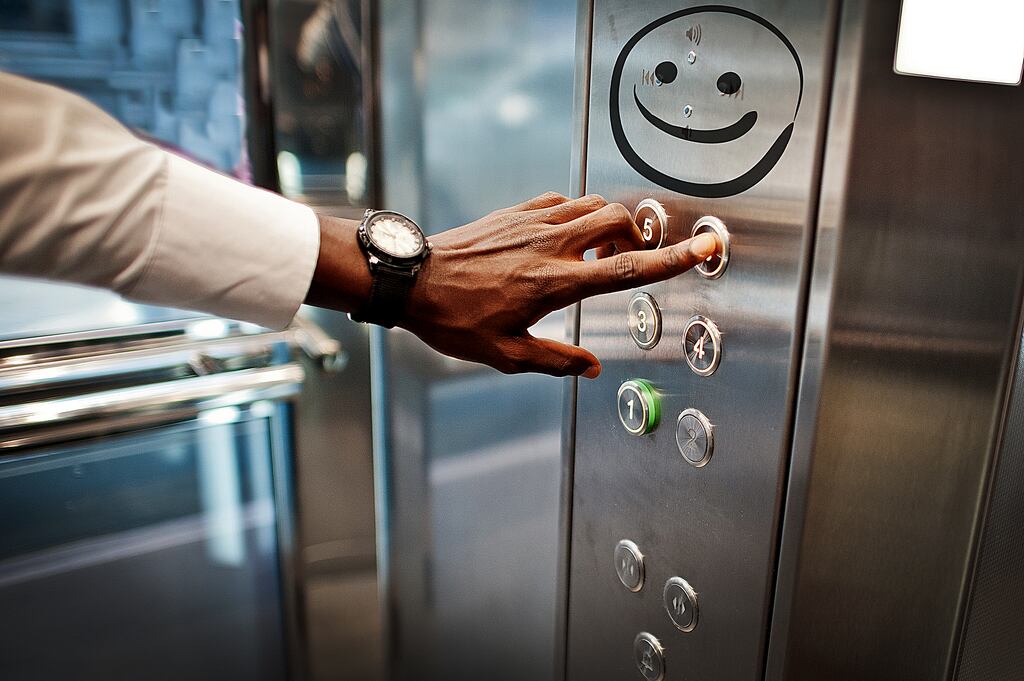Someone has drawn two googly eyes in the hospital lift. When I see them I begin to laugh, deliriously – the perfect maniacal-supervillain-alone-in-an-elevator laugh. The black eyes, which look out from a whiteboard on the lift wall, are a welcome relief from hospital-canteen menus and reminders for doctors to chart insulin for patients they are discharging – medicalised language with a medicalised message.
The eyes are different, a welcome infusion of something unheard of in an Irish hospital corridor: personality. I wonder how long they will survive as the only living thing within the steel walls of the third-floor lift that frequently breaks down when it should be transporting patients.
Medical students at Mater Misericordiae University Hospital, in Dublin, know this elevator. It’s where they hang out, in the old part of the building. One day I was standing behind three young men who sounded so optimistic about the future of medicine that it brought a tear to my eye. I had to tell them one final thing to remember: your chronically ill patients know way more than you think, so listen to them. The trio blushed. I felt like an elderly neighbour who had got lost on the way home and thought they were her grandsons. A maniacal laugh would surely get me out of this. They stepped back, gently, in response.
I’ve been assisting in the training of doctors since I could talk. As a six-year-old I was making a tidy living presenting myself as a case study for junior doctors’ examinations. My series of Marcel Marceau gestures, which helped to guide jittery medical students without alerting their examiners, were legendary. I rubbed my wrist to signal why they were about to fail: no watch! I stroked my chin: check the glands! I rolled my fingers against my knee: check the reflexes! Most of the time the watch was the single most frustrating factor, especially when they had everything else: bedside manner, eye contact, enthusiasm, no fangs. But without the watch it was an immediate fail.
READ MORE
The lift was broken for three whole weeks recently. I saw no enthusiastic faces bright and beaming against the steel. I wondered why it took so long to fix the elevator given the hospital knows it transports dialysis patients as well as medical students. Both lifts travel to the third floor, but one won’t go there unless swiped with a valid ID. I dream of an Ireland where patients are prioritised and simple access requirements do not require a PhD entitled Escape the Maze. I dream of an Ireland where the “new” dialysis unit is not opened in a building that dates back to the 1800s and where thought is instead given to the future development of multidisciplinary lung-transplant and kidney care within the new Mater building that is under construction.
In the oldest part of the hospital, where the ghosts of nuns loom and heckle, the eyes are a comforting reminder that someone else is witnessing, trying to make sense of things. I hope they don’t get erased
The next time I entered the elevator I saw a faint line below the googly eyes: the Banksy of the Mater had added something that could be called a smile. I wanted more. We need art on every centimetre of the hospital walls, especially in these old buildings. We need artists-in-residence in every medical space in Ireland, to provide nonsecular, open-hearted warmth. We must change the way the system stands and how we move through it. When I talk about art, what I mean is hope: some kind of reflection that comments on and celebrates the humanity of the people working within the space and those attending it. A cocreation with care and community.
In the oldest part of the hospital, where the ghosts of nuns loom and heckle, where the brown mucky walls and long faux-ornate windows and endless nondescript corridors run into each other, the eyes are a welcome change. They’re a comforting reminder that someone else is witnessing, trying to make sense of things, and speaking about it through this tiny act. I hope they don’t get erased.
We must find a way to keep this energy in Ireland, or those junior doctors, overworked and undersupported, will be gone. The empty consultant posts will stay empty. Patients and staff will continue to feel desperate, anxious and alone, as if they’ve been left to plug holes as their ship sinks deeper and lifts stay broken for three weeks at a time.
Maybe the eyes, uneven and nondescript, were a cry for help, an expression of the chaos of trying to be your best as a healthcare worker inside a system that demands so much. Or maybe they were just a few seconds of pure pleasure on a lift ride.














